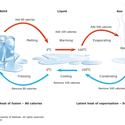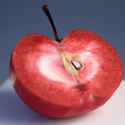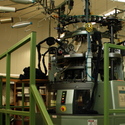In this activity, students create artificial bones made of paper to compare the relative strength of solid bones with hollow bones.
By the end of this activity, students should be able to:
- describe the main anatomical features of a large load-bearing bone like the femur
- compare the load characteristics of hollow versus solid paper ‘bones’
- explain the advantages of hollow versus solid in terms of bone construction.
Download the Word file (see link below) for:
- introduction/background notes
- instructions on what you need and what to do
- student worksheets.
Related content
Bone and tooth minerals The minerals found in human teeth and bones that give them their hardness and strength belong to a mineral family known as biological apatites. The biological apatites are forms of calcium hydroxyapatite. This resource looks at the chemical and physical properties of this mineral as found in tooth enamel, dentine and bone.
Bovine hydroxyapatite is being investigated as a possible human bone repair material. Instead of harvesting human bone (autografting) for use in the repair process, bovine hydroxyapatite is a possible alternative.
Related activity
Bone minerals: investigate how bone strength varies with its mineral content and the solubility of bone minerals in neutral and acidic solutions.






